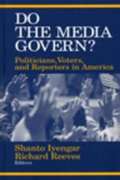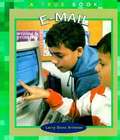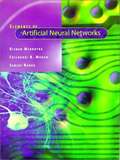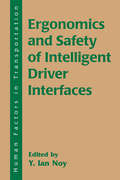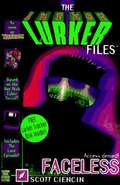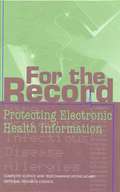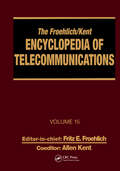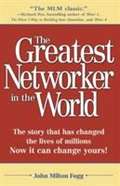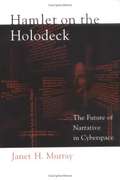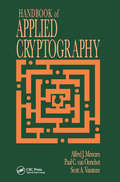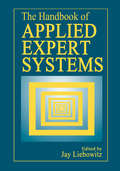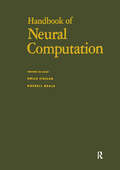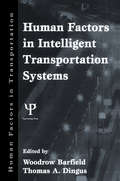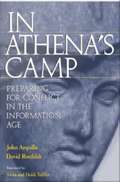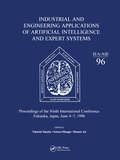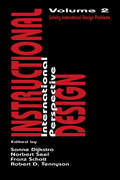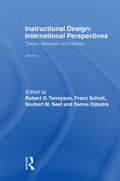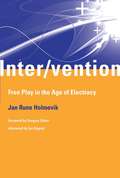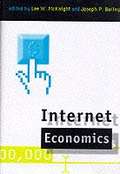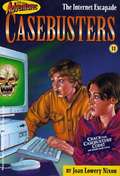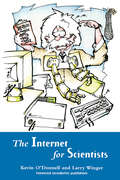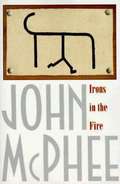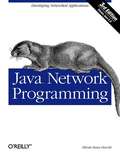- Table View
- List View
Do the Media Govern? Politicians, Voters, and Reporters in America
by Shanto Iyengar Richard ReevesEssays.
E-Mail: A True Book
by Larry Dane BrimnerCompletely redesigned for today's young, investigative reader, True Books are an indispensable addition to any collection. Each book guides the reader through the facts that nurture their need to know. The new, dynamic True Book design features: -- an inviting and interactive page format, -- a readable and attractive typeface, -- large, bold, and brilliant full-color photographs. The True Books series takes the young reader beyond the standard, fact-filled text by adding avenues for further discovery. Each book includes a variety of sidebars, highlighting extra facts that will fascinate children. In the Important Words section, young readers will find a glossary of words that will both challenge and expand their vocabulary. Each book includes a To Find Out More section, where every curious reader can find a list of related books to read and organizations to contact. True Books also point readers to the vast electronic universe of information on the Internet. Each book will list: -- e-mail addresses to help the reader contact individuals and organizations, -- appropriate newsgroups and mailing lists, -- FTP sites to download fun and useful software.
Elements of Artificial Neural Networks
by Kishan Mehrotra Chilukuri K. Mohan Sanjay RankaElements of Artificial Neural Networks provides a clearly organized general introduction, focusing on a broad range of algorithms, for students and others who want to use neural networks rather than simply study them. The authors, who have been developing and team teaching the material in a one-semester course over the past six years, describe most of the basic neural network models (with several detailed solved examples) and discuss the rationale and advantages of the models, as well as their limitations. The approach is practical and open-minded and requires very little mathematical or technical background. Written from a computer science and statistics point of view, the text stresses links to contiguous fields and can easily serve as a first course for students in economics and management. The opening chapter sets the stage, presenting the basic concepts in a clear and objective way and tackling important--yet rarely addressed--questions related to the use of neural networks in practical situations. Subsequent chapters on supervised learning (single layer and multilayer networks), unsupervised learning, and associative models are structured around classes of problems to which networks can be applied. Applications are discussed along with the algorithms. A separate chapter takes up optimization methods. The most frequently used algorithms, such as back propagation, are introduced early on, right after perceptrons, so that these can form the basis for initiating course projects. Algorithms published as late as 1995 are also included. All of the algorithms are presented using block-structured pseudo-code, and exercises are provided throughout. Software implementing many commonly used neural network algorithms is available at the book's website. Transparency masters, including abbreviated text and figures for the entire book, are available for instructors using the text.
Ergonomics and Safety of Intelligent Driver Interfaces (Human Factors In Transportation Ser.)
by Y. Ian NoyEven to the casual observer of the automotive industry, it is clear that driving in the 21st century will be radically different from driving as we know it today. Significant advances in diverse technologies such as digital maps, communication links, processors, image processing, chipcards, traffic management, and vehicle positioning and tracking, are enabling extensive development of intelligent transport systems (ITS). Proponents of ITS view these technologies as freeing designers to re-define the role and function of transport in society and to address the urgent problems of congestion, pollution, and safety. Critics, on the other hand, worry that ITS may prove too complex, too demanding, and too distracting for users, leading to loss of skill, increased incidence of human error, and greater risk of accidents. The role of human factors is widely acknowledged to be critical to the successful implementation of such technologies. However, too little research is directed toward advancing the science of human-ITS interaction, and too little is published which is useful to system designers. This book is an attempt to fill this critical gap. It focuses on the intelligent driver interface (IDI) because the ergonomics of IDI design will influence safety and usability perhaps more than the technologies which underlie it. The chapters cover a broad range of topics, from cognitive considerations in the design of navigation and route guidance, to issues associated with collision warning systems, to monitoring driver fatigue. The chapters also differ in intent -- some provide design recommendations while others describe research findings or new approaches for IDI research and development. Based in part on papers presented at a symposium on the ergonomics of in-vehicle human systems held under the auspices of the 12th Congress of the International Ergonomics Association, the book provides an international perspective on related topics through inclusion of important contributions from Europe, North America, and Japan. Many of the chapters discuss issues associated with navigation and route guidance because such systems are the most salient and arguably the most complex examples of IDI. However, the findings and research methodologies are relevant to other systems as well, making this book of interest to a wide audience of researchers, design engineers, transportation authorities, and academicians involved with the development or implementation of ITS.
Faceless (The Lurker Files #1)
by Scott CiencinPlaying the popular campus video game, The Lurker, Josh Stewart is horrified to learn that his roommate and opponent, Wreak Havoc, is out to secure Josh's permanent elimination.
For the Record Protecting Electronic Health Information
by Committee on Maintaining Privacy Security in Health Care Applications of the National Information InfrastructureWhen you visit the doctor, information about you may be recorded in an office computer. Your tests may be sent to a laboratory or consulting physician. Relevant information may be transmitted to your health insurer or pharmacy. Your data may be collected by the state government or by an organization that accredits health care or studies medical costs. By making information more readily available to those who need it, greater use of computerized health information can help improve the quality of health care and reduce its costs. Yet health care organizations must find ways to ensure that electronic health information is not improperly divulged. Patient privacy has been an issue since the oath of Hippocrates first called on physicians to "keep silence" on patient matters, and with highly sensitive data--genetic information, HIV test results, psychiatric records--entering patient records, concerns over privacy and security are growing.For the Record responds to the health care industry's need for greater guidance in protecting health information that increasingly flows through the national information infrastructure--from patient to provider, payer, analyst, employer, government agency, medical product manufacturer, and beyond. This book makes practical detailed recommendations for technical and organizational solutions and national-level initiatives.For the Record describes two major types of privacy and security concerns that stem from the availability of health information in electronic form: the increased potential for inappropriate release of information held by individual organizations (whether by those with access to computerized records or those who break into them) and systemic concerns derived from open and widespread sharing of data among various parties.The committee reports on the technological and organizational aspects of security management, including basic principles of security; the effectiveness of technologies for user authentication, access control, and encryption; obstacles and incentives in the adoption of new technologies; and mechanisms for training, monitoring, and enforcement.For the Record reviews the growing interest in electronic medical records; the increasing value of health information to providers, payers, researchers, and administrators; and the current legal and regulatory environment for protecting health data. This information is of immediate interest to policymakers, health policy researchers, patient advocates, professionals in health data management, and other stakeholders.
The Froehlich/Kent Encyclopedia of Telecommunications: Volume 15 - Radio Astronomy to Submarine Cable Systems
by Fritz E. Froehlich Allen KentThis is volume fifteen of the Encyclopedia of Telecommunications, which covers Radio Astronomy to Submarine Cable Systems in alphabetical listing and information on the contributors
The Greatest Networker in the World
by John Milton FoggJohn Fogg shares his experiences. His techniques will change how you approach networking for ever. This book addresses the differences between conventional marketing and multilevel marketing.
Gregg College Keyboarding and Document Processing for Windows: Lessons 1-60
by Scot OberThis book is a multi component instructional program designed to give the student and the instructor a high degree of flexibility and a high degree of success in meeting their respective goals.
Hamlet On the Holodeck
by Janet Horowitz MurrayWritten by a former MIT professor, this book is one of the groundbreaking explorations of how literature and technology, narrative and cyberspace, overlap.
Handbook of Applied Cryptography (Discrete Mathematics and Its Applications)
by Alfred J. Menezes Paul C. van Oorschot Scott A. VanstoneCryptography, in particular public-key cryptography, has emerged in the last 20 years as an important discipline that is not only the subject of an enormous amount of research, but provides the foundation for information security in many applications. Standards are emerging to meet the demands for cryptographic protection in most areas of data communications. Public-key cryptographic techniques are now in widespread use, especially in the financial services industry, in the public sector, and by individuals for their personal privacy, such as in electronic mail. This Handbook will serve as a valuable reference for the novice as well as for the expert who needs a wider scope of coverage within the area of cryptography. It is a necessary and timely guide for professionals who practice the art of cryptography. The Handbook of Applied Cryptography provides a treatment that is multifunctional:It serves as an introduction to the more practical aspects of both conventional and public-key cryptography It is a valuable source of the latest techniques and algorithms for the serious practitioner It provides an integrated treatment of the field, while still presenting each major topic as a self-contained unit It provides a mathematical treatment to accompany practical discussions It contains enough abstraction to be a valuable reference for theoreticians while containing enough detail to actually allow implementation of the algorithms discussedNow in its third printing, this is the definitive cryptography reference that the novice as well as experienced developers, designers, researchers, engineers, computer scientists, and mathematicians alike will use.
The Handbook of Applied Expert Systems
by Jay LiebowitzThe Handbook of Applied Expert Systems is a landmark work dedicated solely to this rapidly advancing area of study. Edited by Jay Liebowitz, a professor, author, and consultant known around the world for his work in the field, this authoritative source covers the latest expert system technologies, applications, methodologies, and practices. The book features contributions from more than 40 of the world's foremost expert systems authorities in industry, government, and academia.The Handbook is organized into two major sections. The first section explains expert systems technologies while the second section focuses on applied examples in a wide variety of industries. Key topics covered include fuzzy systems, genetic algorithm development, machine learning, knowledge representation, and much more.
Handbook of Neural Computation: Supplement 1
by Emile Fiesler Russell BealeThe Handbook of Neural Computation is a practical, hands-on guide to the design and implementation of neural networks used by scientists and engineers to tackle difficult and/or time-consuming problems.The handbook bridges an information pathway between scientists and engineers in different disciplines who apply neural networks to similar probl
Human Factors in Intelligent Transportation Systems
by Woodrow Barfield Thomas A. DingusThe Intelligent Transportation System (ITS) Program is a cooperative effort by government, private industry, and academia to apply advanced technology to the task of resolving the problems of surface transportation. The objective is to improve travel efficiency and mobility, enhance safety, conserve energy, provide economic benefits, and protect the environment. The current demand for mobility has exceeded the available capacity of the roadway system. Because the highway system cannot be expanded, except in minor ways, the available capacity must be used more efficiently to handle the increased demand. ITS applies advanced information processing, communication, sensing, and computer control technologies to the problems of surface transportation. Considerable research and development efforts will be required to produce these new technologies and to convert technologies developed in the defense and space programs to solve surface transportation problems. ITS has been subdivided into six interlocking technology areas. This book addresses human factors concerns for four of these areas: * Advanced Traveler Information Systems are a variety of systems that provide real time, in-vehicle information to drivers regarding navigation and route guidance, motorist services, roadway signing, and hazard warnings. * Advanced Vehicle Control Systems refer to systems that aid drivers in controlling their vehicle particularly in emergency situations and ultimately taking over some or all of the driving tasks. * Commercial Vehicle Operations address the application of ITS technologies to the special needs of commercial roadway vehicles including automated vehicle identification, location, weigh-in-motion, clearance sensing, and record keeping. * Advanced Traffic Management Systems monitor, control and manage traffic on streets and highways to reduce congestion using vehicle route diversion, automated signal timing, changeable message signs, and priority control systems. Two technical areas are not specifically addressed in individual chapters, but many aspects of them are covered in associated chapters: * Advanced Rural Transportation Systems include systems that apply ITS technologies to the special needs of rural systems and include emergency notification and response, vehicle location, and traveler information. * Advanced Public Transportation Systems enhance the effectiveness, attractiveness and economics of public transportation and include fleet management, automated fare collection, and real-time information systems.
In Athena's Camp
by John Arquilla David RonfeldtThe information revolution--which is as much an organizational as a technological revolution--is transforming the nature of conflict across the spectrum: from open warfare, to terrorism, crime, and even radical social activism. The era of massed field armies is passing, because the new information and communications systems are increasing the lethality of quite small units that can call in deadly, precise missile fire almost anywhere, anytime. In social conflicts, the Internet and other media are greatly empowering individuals and small groups to influence the behavior of states. Whether in military or social conflicts, all protagonists will soon be developing new doctrines, strategies, and tactics for swarming their opponents--with weapons or words, as circumstances require. Preparing for conflict in such a world will require shifting to new forms of organization, particularly the versatile, hardy, all-channel network. This shift will prove difficult for states and professional militaries that remain bastions of hierarchy, bound to resist institutional redesign. They will make the shift as they realize that information and knowledge are becoming the key elements of power. This implies, among other things, that Mars, the old brute-force god of war, must give way to Athena, the well-armed goddess of wisdom. Accepting Athena as the patroness of this information age represents a first step not only for preparing for future conflicts, but also for preventing them.
Industrial and Engineering Applications or Artificial Intelligence and Expert Systems
by Takushi Tanaka; Setsuo Ohsuga; Moonis AliThis volume includes the proceedings from Proceedings of the Ninth International Conference Fukuoka, Japan, June 4-7, 1996. This work represents a broad spectrum of new ideas in the field of applied artificial intelligence and expert systems, and serves to disseminate information regarding intelligent methodologies and their implementation in solving various problems in industry and engineering.
Instructional Design: Volume I: Theory, Research, and Models:volume Ii: Solving Instructional Design Problems
by Sanne Dijkstra Norbert M. Seel Franz Schott Robert D. TennysonInstructional design theory and practice has evolved over the past 30 years from an initial narrow focus on programmed instruction to a multidimensional field of study integrating psychology, technology, evaluation, measurement, and management. The growth of instructional design (ID) has occurred because of direct needs, problems, and goals from society. Its application in planning instruction first developed in the United States with the Department of Defense during World War II with the purpose of meeting immediate concerns for effective training of larger numbers of military personnel. From the beginning, ID has rapidly expanded into applications in industrial and executive training, vocational training, classroom learning, and professional education. Although ID has its roots in the U.S., applications and theoretical growth is an international activity. However, literature at the international level is still limited to either individual author contributions or collections primarily represented by single countries. As a result, there is no standard reference source that contains the rich variety of theories and applications to form the international foundation for the field. The goal of this two-volume set is to establish international foundations for ID theory, research, and practice within the framework of the two following objectives: * to identify and define the theoretical, research, and model foundations for ID, and * to bridge the gap between ID foundations and application. Volume I includes chapters on philosophical and theoretical issues on learning theory and ID models. Volume II provides an overview of the state of the art of solving ID problems. The contributors offer contrasting points of view which provide a rare opportunity to see the diversity and complexity in the field. The editorial committee has selected a wide range of internationally known authors to make presentations in the topic areas of the field.
Instructional Design: Volume I: Theory, Research, and Models:volume Ii: Solving Instructional Design Problems
by Robert D. Tennyson Franz Schott Norbert M. Seel Sanne DijkstraInstructional design theory and practice has evolved over the past 30 years from an initial narrow focus on programmed instruction to a multidimensional field of study integrating psychology, technology, evaluation, measurement, and management. The growth of instructional design (ID) has occurred because of direct needs, problems, and goals from society. Its application in planning instruction first developed in the United States with the Department of Defense during World War II with the purpose of meeting immediate concerns for effective training of larger numbers of military personnel. From the beginning, ID has rapidly expanded into applications in industrial and executive training, vocational training, classroom learning, and professional education. Although ID has its roots in the U.S., applications and theoretical growth is an international activity. However, literature at the international level is still limited to either individual author contributions or collections primarily represented by single countries. As a result, there is no standard reference source that contains the rich variety of theories and applications to form the international foundation for the field. The goal of this two-volume set is to establish international foundations for ID theory, research, and practice within the framework of the two following objectives: * to identify and define the theoretical, research, and model foundations for ID, and * to bridge the gap between ID foundations and application. Volume I includes chapters on philosophical and theoretical issues on learning theory and ID models. Volume II provides an overview of the state of the art of solving ID problems. The contributors offer contrasting points of view which provide a rare opportunity to see the diversity and complexity in the field. The editorial committee has selected a wide range of internationally known authors to make presentations in the topic areas of the field.
Inter/vention
by Jan Rune Jan Rune HolmevikIn today's complex digital world, we must understand new media expressions and digital experiences not simply as more technologically advanced forms of "writing" that can be understood and analyzed as "texts" but as artifacts in their own right that require a unique skill set. Just as agents seeking to express themselves in alphabetic writing need to be literate, "egents" who seek to express themselves in digital media need to be--to use a term coined by cybertheorist Gregory Ulmer-- electrate. In Inter/vention, Jan Holmevik helps to invent electracy. He does so by tracing its path across the digital and rhetorical landscape--informatics, hacker heuretics, ethics, pedagogy, virtual space, and monumentality--and by introducing play as a new genre of electracy. Play, he argues, is the electrate ludic transversal. Holmevik contributes to the repertoire of electrate practices in order to understand and demonstrate how play invents electracy. Holmevik's argument straddles two divergences: in rhetoric, between how we study rhetoric as play and how we play rhetorically; and in game studies, between ludology and narratology. Games studies has forged ludology practice by distinguishing it from literate practice (and often allying itself with the scientific tradition). Holmevik is able to link ludology and rhetoric through electracy. Play can and does facilitate invention: play invented the field of ludology. Holmevik proposes a new heuretic in which play acts as a conductor for the invention of electracy. Play is a meta behavior that touches on every aspect of Ulmer's concept of electracy.
Internet Economics
by Lee W. Mcknight Joseph P. BaileyThe Internet has rapidly become an important element of the economic system. The lack of accepted metrics for economic analysis of Internet transactions is therefore increasingly problematic. This book, one of the first to bring together research on Internet engineering and economics, attempts to establish such metrics. The chapters, which developed out of a 1995 workshop held at MIT, include architectural models and analyses of Internet usage, as well as alternative pricing policies. The book is organized into six sections: 1) Introduction to Internet Economics, 2) The Economics of the Internet, 3) Interconnection and Multicast Economics, 4) Usage Sensitive Pricing, 5) Internet Commerce, and 6) Internet Economics and Policy. Contributors: Loretta Anania, Joseph P. Bailey, Nevil Brownlee, David Carver, David Clark, David W. Crawford, Ketil Danielsen, Deborah Estrin, Branko Gerovac, David Gingold, Jiong Gong, Alok Gupta, Shai Herzog, Clark Johnson, Martyne M. Hallgren, Frank P. Kelly, Charlie Lai, Alan K. McAdams, Jeffrey K. MacKie-Mason, Lee W. McKnight, Gennady Medvinsky, Liam Murphy, John Murphy, B. Clifford Neuman, Jon M. Peha, Joseph Reagle, Mitrabarun Sarkar, Scott Shenker, Marvin A. Sirbu, Richard Jay Solomon, Padmanabhan Srinagesh, Dale O. Stahl, Hal R. Varian, Qiong Wang, Martin Weiss, Andrew B. Whinston.
The Internet Escapade
by Joan Lowery NixonBecause Sean and Matt have been playing pranks on the school computers, they are in trouble when someone else creates real mischief with the technology.
Internet for Scientists
by Kevin O'Donnell Larry WingerThis book provides a straightforward manual and review handbook for accessing and using the resources of the Internet in the day to day labours of the working scientist. It addresses the problem of how to cope with an army who have discovered a whole new toy shop full of goodies.
Introduction To Linear Optimization
by Dimitris Bertsimas John N. TsitsiklisThe purpose of this book is to provide a unified, insightful, and modern treatment of linear optimization, that is, linear programming, network flow problems, and discrete linear optimization.
Irons in the Fire
by John McpheeAnother of McPhee's anthologies of well-written, highly informed, and very enjoyable essays that originally appeared in the New Yorker magazine. Joihn McPhee has a talent for making any subject interesting, and the diversity of the subjects he shares with his readers just in this book is astounding - from branding cattle to mountains made of tires to forensic geology to Plymouth Rock, and more.
Java Network Programming, 3rd Edition
by Elliotte Rusty HaroldThe new third edition of this highly regarded introduction to Java networking programming has been thoroughly revised to cover all of the 100+ significant updates to Java Developers Kit (JDK) 1.5. It is a clear, complete introduction to developing network programs (both applets and applications) using Java, covering everything from networking fundamentals to remote method invocation (RMI). Java Network Programming , 3rd Edition includes chapters on TCP and UDP sockets, multicasting protocol and content handlers, servlets, multithreaded network programming, I/O, HTML parsing and display, the Java Mail API, and the Java Secure Sockets Extension. There's also significant information on the New I/O API that was developed in large part because of the needs of network programmers. This invaluable book is a complete, single source guide to writing sophisticated network applications. Packed with useful examples, it is the essential resource for any serious Java developer.
